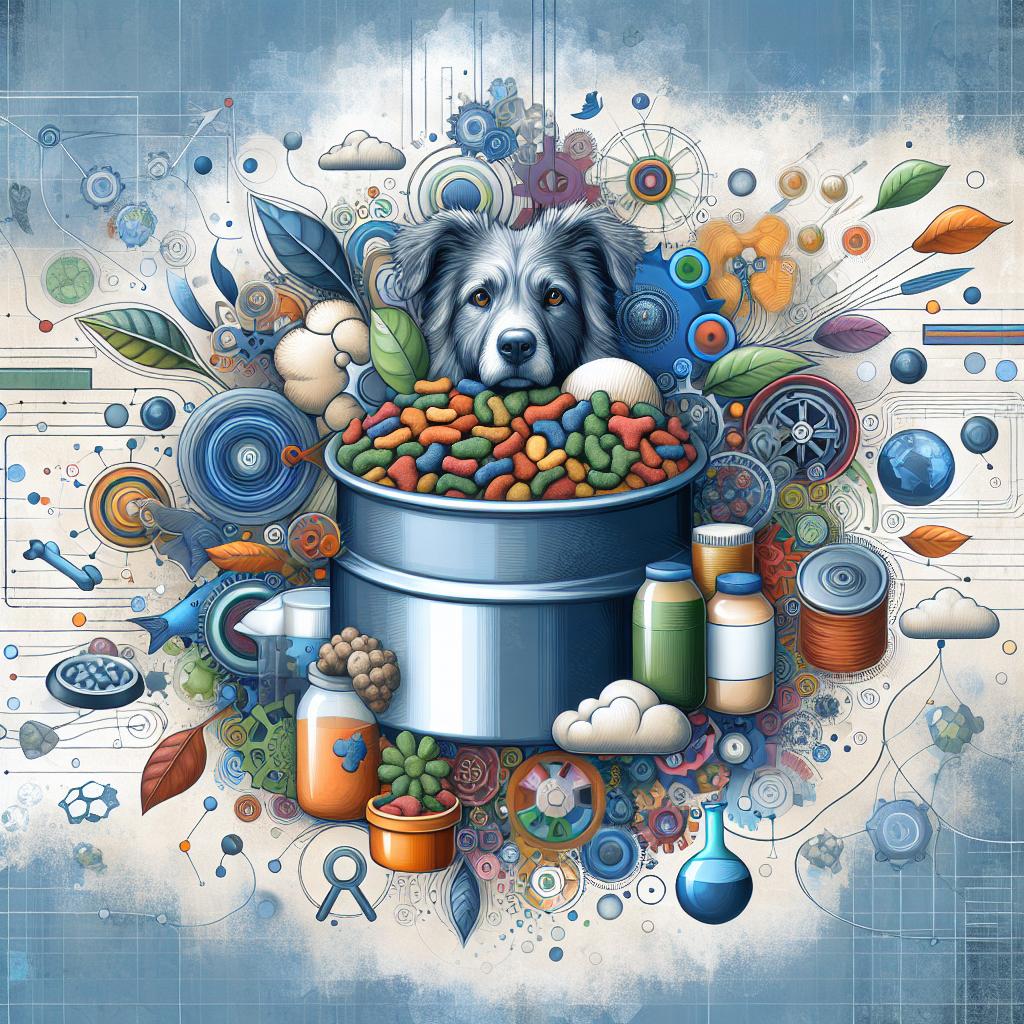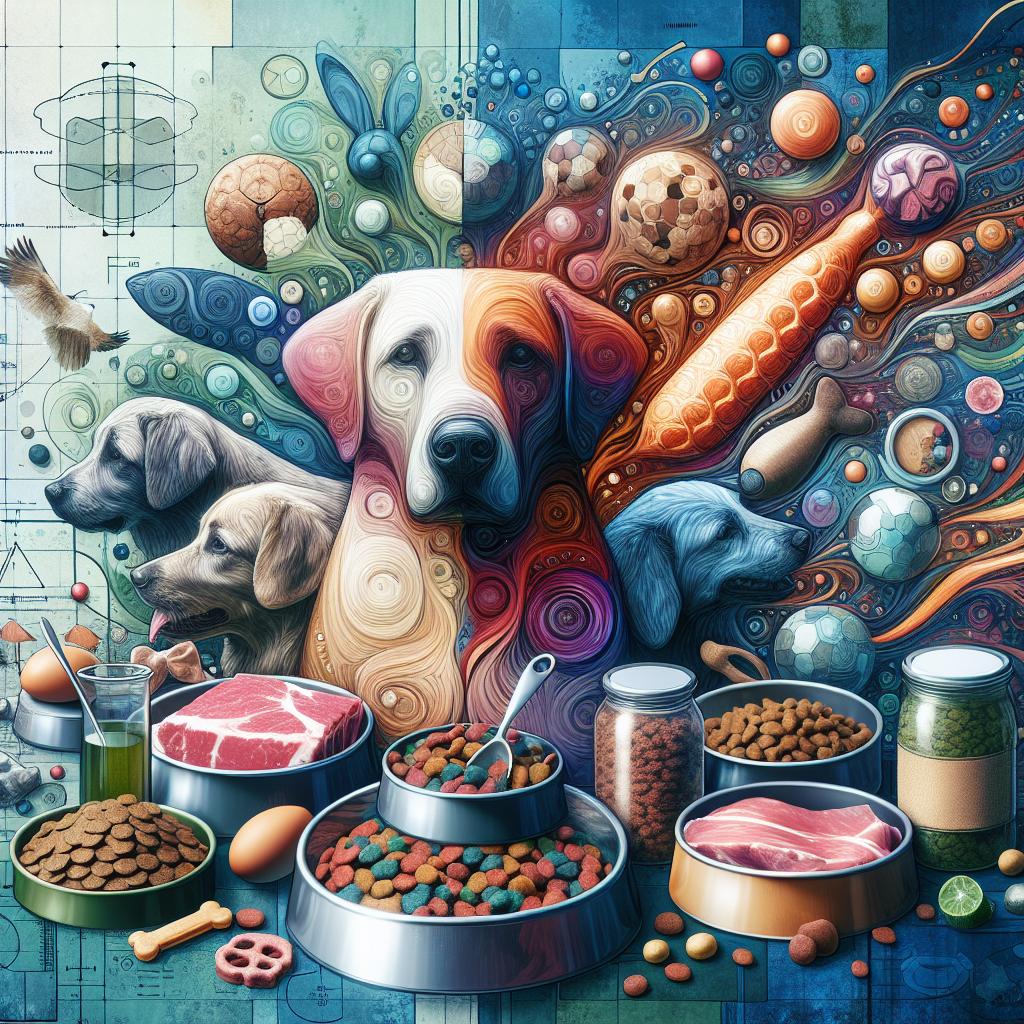Understanding the Different Types of Dog Food: A Comprehensive Guide for Pet Parents
In a world brimming with choices, selecting the right dog food can feel like navigating a labyrinth. With an array of options on the shelves ranging from kibble to canned meals, grain-free formulas to raw diets, pet owners often find themselves asking: What does my dog really need? Just as our diets influence our well-being, the food we provide for our four-legged family members plays a pivotal role in their health, happiness, and longevity. In this article, we will unravel the complexities of dog food, exploring the diverse types available and the benefits each provides. By understanding the nutritional landscape, you can confidently choose a diet that meets your dog’s unique needs, ensuring they lead a vibrant and fulfilling life. So grab a leash and let’s embark on this culinary journey, where we’ll decode the labels, highlight key ingredients, and shed light on recent trends in dog nutrition. Your furry companion’s tail will be wagging with excitement in no time!
Exploring the Nutritional Needs of Your Dog
Understanding the nutritional needs of your dog is essential for maintaining their overall health and well-being. Dogs, like humans, require a balanced diet that includes proteins, fats, carbohydrates, vitamins, and minerals. Each nutrient plays a crucial role in various bodily functions, from energy production to immune system support. Regular consultations with a veterinarian will help ensure that you’re meeting your dog’s specific dietary requirements, which can vary based on factors such as age, breed, size, and activity level.
When selecting the right type of food for your furry friend, it’s important to consider the different available options. Here’s a brief overview of common types of dog food along with their characteristics:
| Type of Dog Food | Description | Benefits |
|---|---|---|
| Dry Food (Kibble) | Processed and dehydrated dog food. | Easy to store, promotes dental health. |
| Canned Food | Moist dog food packaged in cans. | Highly palatable, good for hydration. |
| Raw Diet | Uncooked meat, bones, and vegetables. | High protein, natural nutrients. |
| Homemade Food | Cooked meals prepared by dog owners. | Customizable, fresh ingredients. |

Decoding the Labels: Ingredients that Matter
When navigating the aisle of dog food options, it’s essential to understand the significance of the ingredients listed on the label. Your furry friend deserves a diet that fuels their health and vitality, so you’ll want to scrutinize the different components that make up their meals. Look for high-quality proteins such as chicken, beef, or fish, as these are vital for muscle development and overall health. Avoid labels with vague terms like “meat by-products” or fillers that offer little nutritional value. Instead, prioritize foods that include wholesome grains, vegetables, and healthy fats, all of which can enhance your dog’s digestion and energy levels.
It’s equally important to be aware of various additives that may appear on the ingredient list. Preservatives, artificial colors, and flavors should ideally be kept to a minimum. A dog food enriched with natural supplements such as omega fatty acids or probiotics can provide additional support for their skin, coat, and gut health. When in doubt, consider creating a simple comparison table of popular brands, highlighting their key ingredients. This can help you make an informed decision based on your dog’s specific needs and dietary preferences.
| Brand | Main Protein Source | Whole Grains | Natural Additives |
|---|---|---|---|
| Brand A | Chicken | Brown Rice | Omega Fatty Acids |
| Brand B | Beef | Barley | Probiotics |
| Brand C | Fish | Quinoa | Vitamins |

Comparing Dry, Wet, and Raw Diets for Optimal Health
When considering the best diet for your canine companion, it’s essential to explore the distinctions between dry, wet, and raw dog foods, as each comes with its own set of benefits and potential drawbacks. Dry kibble is the most common choice among pet owners, primarily due to its convenience, affordability, and long shelf life. It is designed to promote dental health through the chewing process, which can help reduce plaque build-up. However, the low moisture content can sometimes lead to dehydration if adequate water is not provided. On the other hand, wet food is recognized for its higher moisture content, making it an excellent option for dogs who struggle with hydration. This type of food often features more natural flavors, enticing even the pickiest eaters. Yet, it can be more expensive and has a shorter shelf life once opened.
In contrast, raw diets have gained traction among dog enthusiasts who advocate for a more natural approach to pet nutrition. This diet typically consists of uncooked meat, bones, fruits, and vegetables. Proponents argue that it mirrors what dogs would eat in the wild, potentially leading to benefits such as improved coat quality and better digestion. However, this diet requires careful handling to avoid the risks of bacterial contamination and may not provide balanced nutrition unless properly planned. If you’re unsure about which diet would best suit your dog, consulting with a veterinarian or a pet nutritionist can provide tailored advice based on your dog’s specific needs.

Making the Right Choice: Recommendations for Every Life Stage
When it comes to selecting the right dog food, understanding your dog’s life stage is crucial. Puppies require a diet rich in protein and essential nutrients to support their rapid growth and energy levels. Look for formulas specifically designed for puppies that include protein sources like chicken or lamb and are enriched with DHA for brain development. Adult dogs, on the other hand, need food that maintains their health without adding excess weight. Opt for balanced diets that provide moderate calories, healthy fats, and fiber to support digestion. Regular vet check-ups can help in adjusting their dietary needs based on their activity levels.
As dogs age, their nutritional requirements change significantly. Senior dogs benefit from a diet that’s lower in calories but higher in fiber to help with digestion and maintain a healthy weight. Look for dog foods that contain joint support supplements like glucosamine and chondroitin to alleviate any arthritis-related issues. It’s also essential to be mindful of allergies or sensitivities your dog may have. Consider diets that are grain-free or limited in ingredients, as these can help prevent allergic reactions and support overall well-being. In all cases, transitioning to a new food should be done gradually to avoid digestive upset.
Q&A
Q&A: Understanding the Different Types of Dog Food
Q1: What are the primary categories of dog food available on the market?
A1: Dog food can be broadly categorized into several types, including dry kibble, canned wet food, raw diets, and home-cooked meals. Each type offers unique benefits and caters to different canine needs and preferences.
Q2: What are the benefits of dry kibble?
A2: Dry kibble is convenient, cost-effective, and has a long shelf life. It’s also beneficial for dental health, as the crunchiness can help reduce plaque buildup. Plus, it’s easier to measure and store, making it a popular choice among dog owners.
Q3: How does canned or wet dog food differ from dry kibble?
A3: Canned wet food typically has higher moisture content, which can aid in hydration—especially important for dogs that may not drink enough water. It’s often more palatable, making it an excellent option for picky eaters. However, it tends to be pricier and has a shorter shelf life once opened.
Q4: What should I know about raw diets for dogs?
A4: Raw diets, often referred to as “BARF” (Bones and Raw Food) or raw-meaty bones, focus on feeding dogs uncooked meats, organs, bones, and sometimes fruits and vegetables. Proponents argue that this diet aligns with a dog’s ancestral eating patterns, promoting better digestion and health. However, raw diets require careful planning to ensure nutritional balance and safety from pathogens.
Q5: Are home-cooked meals a good alternative for dogs?
A5: Home-cooked meals are definitely an option, especially for dogs with specific dietary requirements or sensitivities. They allow pet owners to control the ingredients, reducing the chances of allergies. That said, it’s crucial to ensure that the meals are well-balanced and meet all of a dog’s nutritional needs—consulting a veterinarian for guidance can be extremely helpful.
Q6: How do I choose the right type of food for my dog?
A6: Choosing the right dog food depends on various factors, including your dog’s age, size, breed, health status, and activity level. Consulting with your veterinarian can help tailor the decision to your dog’s specific nutritional needs. Always transition to new foods gradually to avoid digestive upset.
Q7: Are there specific diets for dogs with health issues?
A7: Yes, there are specialized diets formulated for different health issues, such as allergies, obesity, kidney disease, and more. These diets often contain specific nutrients to support health while addressing the condition. Always work with a veterinarian to identify the best dietary approach for your dog’s health problems.
Q8: Is the brand of dog food important?
A8: Yes, the brand can indicate the quality of ingredients and the company’s commitment to pet nutrition. Look for brands that adhere to AAFCO (Association of American Feed Control Officials) standards and those that provide transparent information about their ingredient sourcing and manufacturing processes.
Q9: How can I tell if my dog is thriving on their current diet?
A9: Signs of a healthy dog include a shiny coat, clear eyes, healthy skin, regular bowel movements, consistent energy levels, and a good weight. If you notice changes in your dog’s behavior, coat condition, or weight, it may be worth reevaluating their diet or consulting with a veterinarian.
Q10: Can I mix different types of dog food?
A10: Mixing different types of food can be done, but it’s essential to gradually introduce new foods and ensure they complement each other nutritionally. Always keep your dog’s health needs in mind and monitor their response to any new combinations.
Key Takeaways
navigating the world of dog food can be a complex journey, but armed with knowledge, you can make informed choices that best suit your furry friend’s needs. Whether you opt for kibble, canned food, raw diets, or homemade meals, the key is understanding the unique requirements of your dog and how different types of nutrition can impact their health and happiness. As you step away from this exploration, remember that each dog is an individual, and what works for one may not be ideal for another. Take the time to observe your pet’s reactions and consult with a veterinarian to tailor a diet that ensures a long, vibrant life for your loyal companion. Happy feeding, and may every meal enrich the bond between you and your four-legged friend!

